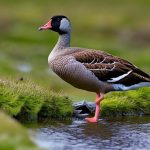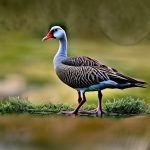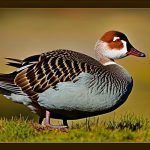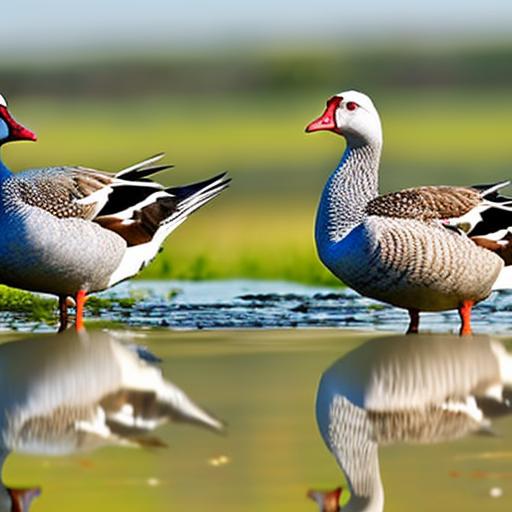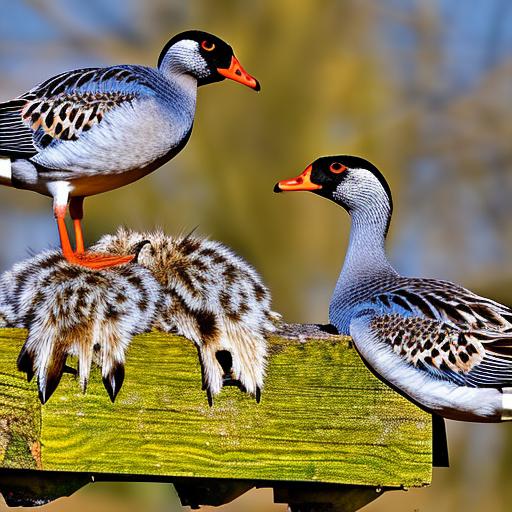Geese are fascinating creatures that have been domesticated for thousands of years. As babies, geese are known as goslings and are incredibly adorable with their fluffy down feathers and tiny webbed feet. They are social animals and thrive in the company of other goslings and adult geese. Goslings are also known for their strong bond with their parents, especially their mother, and they rely on her for warmth, protection, and guidance during their early days. As they grow, goslings develop distinct personalities and characteristics that make them unique from one another. Understanding the different geese breeds and their traits as babies is essential for anyone looking to raise these charming birds.
Hatching and Early Care for Goslings
The hatching process for goslings typically takes around 28-30 days, depending on the breed. During this time, it’s crucial to provide the mother goose with a quiet and secure nesting area to ensure the eggs are not disturbed. Once the goslings hatch, they are initially wet and vulnerable, so it’s important to provide them with a warm and dry environment to help them dry off and regulate their body temperature. The first few days of a gosling’s life are critical for their development, and they require constant care and attention. It’s essential to monitor their health, ensure they are eating and drinking properly, and protect them from predators. Additionally, providing them with a safe and comfortable brooder or enclosure is essential for their well-being.
Different Geese Breeds and Their Characteristics as Babies
There are several geese breeds, each with its own unique characteristics as babies. For example, Embden goslings are known for their pure white feathers and gentle disposition, making them a popular choice for those looking to raise geese for meat or as pets. Toulouse goslings, on the other hand, have a striking grey plumage and are known for their calm and friendly nature. Chinese geese goslings are easily recognizable by their knobbed beaks and come in a variety of colors, including brown, white, and grey. They are known for being excellent foragers and are often kept for weed control in gardens and orchards. Understanding the specific traits of each geese breed as babies can help you choose the right breed for your needs and preferences.
Feeding and Nutrition for Growing Goslings
Proper nutrition is essential for the healthy growth and development of goslings. During their first few weeks of life, goslings should be fed a high-quality starter feed specifically formulated for waterfowl. This feed should contain essential nutrients such as protein, vitamins, and minerals to support their rapid growth. Additionally, providing access to clean water is crucial for their hydration and digestion. As they grow, goslings can also benefit from foraging for grass, insects, and other natural foods. It’s important to monitor their feeding habits and adjust their diet as they mature to ensure they are receiving the proper nutrition for their age and breed.
Housing and Environment for Young Geese
Creating a suitable housing and environment for young geese is essential for their well-being. A secure and predator-proof enclosure is necessary to protect them from potential threats such as foxes, raccoons, and birds of prey. The enclosure should also provide ample space for the goslings to move around freely and access to fresh air and natural sunlight. Additionally, providing a clean bedding material such as straw or wood shavings can help keep the goslings warm and comfortable. Access to a shallow water source such as a kiddie pool or shallow dish is also important for goslings to learn how to swim and groom themselves.
Health and Wellness Tips for Goslings
Ensuring the health and wellness of goslings is crucial for their long-term well-being. Regular health checks by a veterinarian can help identify any potential issues early on and prevent them from escalating. Additionally, providing a clean and hygienic environment is essential for preventing diseases and parasites. Proper vaccination protocols should also be followed to protect goslings from common poultry diseases. Monitoring their behavior and appetite can also provide valuable insights into their overall health. Providing opportunities for exercise and social interaction with other goslings can also contribute to their mental and physical well-being.
Transitioning from Goslings to Adult Geese
As goslings mature, they will undergo physical and behavioral changes as they transition into adult geese. It’s important to gradually introduce them to the outdoor environment and allow them to explore their surroundings under supervision. Providing access to a larger outdoor enclosure or pasture can help them develop their natural instincts such as foraging and grazing. Additionally, transitioning them to an adult waterfowl feed can support their nutritional needs as they grow. As they reach sexual maturity, it’s important to consider their housing needs, especially if you plan on breeding them. Understanding the natural behaviors of adult geese can help you provide them with a suitable environment that meets their needs.
In conclusion, raising geese from babies to adults can be a rewarding experience that requires careful attention to their specific needs at each stage of their development. Understanding the different geese breeds as babies, providing proper nutrition, housing, and healthcare, and supporting their transition into adulthood are all essential aspects of raising healthy and happy geese. By following these guidelines and being attentive to their individual needs, you can create a thriving environment for your geese to flourish and enjoy a fulfilling life on your farm or homestead.
Meet Walter, the feathered-friend fanatic of Florida! Nestled in the sunshine state, Walter struts through life with his feathered companions, clucking his way to happiness. With a coop that’s fancier than a five-star hotel, he’s the Don Juan of the chicken world. When he’s not teaching his hens to do the cha-cha, you’ll find him in a heated debate with his prized rooster, Sir Clucks-a-Lot. Walter’s poultry passion is no yolk; he’s the sunny-side-up guy you never knew you needed in your flock of friends!



